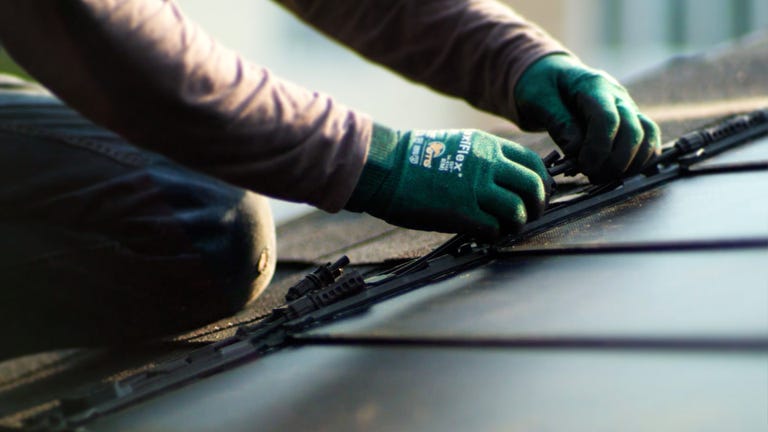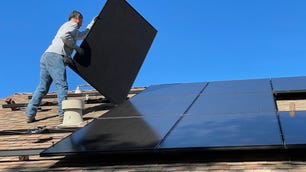Buying a solar energy system is considerably cheaper today than it used to be, but it’s definitely still a huge purchase. Thankfully, there are ways to get solar power without the huge up-front cost.
If you don’t want to pay the hefty cost of installing a solar energy system on your home, you can consider solar leases and power purchase agreements. With these, you can also avoid current high interest rates on solar loans. Leasing solar panels or going with a solar PPA both include a contract with a provider. The provider handles the financial and logistical burden of putting solar panels on your property, which takes away a lot of the headache. The only thing you have to worry about is making a monthly payment as part of the terms of your lease or solar power purchase agreement.
According to Garrett Mendelsohm, CEO of Solar Bootcamp, one big advantage of both leases and power purchase agreements is that many will replace equipment during the contract period when it comes to the end of its lifetime.
“It’s especially great for things like batteries that are only warrantied for 10 years. It’s better than financing a system,” he said.
Though solar leases and PPAs can seem like the same thing, there’s a big difference in the monthly amount you’ll actually be paying. More on that below.
What is a solar lease?
Much like leasing a car, a solar lease is a way to tap into some of the benefits of installing solar but without the commitment of a system that’s usually intended to last for a couple decades. Your solar company will install your system and keep it working as it should for the agreement period, so long as you make your agreed upon payments.
That can mean not having to worry about service or maintenance while you’re leasing. Some leases may also give you the option to buy the equipment and take over ownership of the system that’s already on your house.
Peace of mind is the primary advantage to leasing a system, but it also means you won’t be able to take advantage of the 30% federal tax credit and most other incentives. Your solar company gets to pocket all of them instead. You’ll also want to read your lease agreement closely to make sure there aren’t any hidden fees or terms you’ll come to regret later. Many agreements will include an escalator, which will increase your monthly payment each year. How much it increases compared to your utility’s rate will affect your savings. Be sure to nail down what happens if you move before your lease term is up, too.
Pros and cons of solar leases
Along with low up-front costs but probably lower lifetime savings, here are some of the benefits and drawbacks of solar leases.
Pros
- No up-front purchase or installation costs
- Potential to reduce monthly utility bills
- No need to worry about maintenance
- Pay over time at a predictable, fixed monthly rate
- Contract term may be shorter than a PPA, but is usually still at least 10 years
Cons
- Missing out on federal tax credit and other incentives
- Monthly charge doesn’t reflect energy usage
- Adds another energy-related bill you’ll need to track
- Many leases include escalators that increase your payment amount over time
What is a power purchase agreement?
A solar lease and a PPA appear to be the same arrangement. In both cases a solar company installs, maintains and owns a system that produces energy for your home and you pay them a monthly amount for the service. The primary difference is the amount you pay. It’s likely to be a fixed amount with a lease, but under a PPA you’re agreeing to pay for the energy you take from the system instead.
Think of a PPA as a variable rate lease based on your energy usage. This is great if you’re looking to make your monthly energy bill a little greener and leaner without having to think about much else in terms of maintaining solar panels or batteries. Just as with a lease, you’ll miss out on most credits and incentives with a PPA.

Watch this: New Solar Shingles You May Not Even Notice
PPAs might also come with the option to buy out the contract and purchase the system. Be sure to read the fine print of your PPA closely as they, too, often contain escalators that may see your solar bills increase over time. And, make sure you know what happens if you move before the PPA’s term is up.
Pros and cons of PPAs
PPAs have plenty of overlap with leases when it comes to benefits and downsides.
Pros
- No up-front solar system purchase or installation costs
- Likely to save more in the long term than a lease
- Save on the amount you pay for energy
- No need to worry about maintenance
- Monthly bill tied to how much energy you use
Cons
- Missing out on federal tax credit and other incentives
- Many PPAs include escalators that increase the rate you pay over time
- Long contract terms up to 25 years
- Bill amount varies
Which is the better choice?
The better choice between a lease and a PPA is likely to come down to the specific terms you’re offered. Broadly speaking, there isn’t much difference between the two setups.
“A lease is a different terminology,” Mendelsohn said. “But they’re really, really close.”
The key difference, again, is paying a fixed monthly amount with a lease or paying based on the energy you use with a PPA. When comparing leases and PPAs, also look at the length of the contract and how your payments may increase over time, as well as options to buy out the contract.
Is a solar lease or a PPA right for me?
If it’s a priority for you to pay a set amount for your solar system per month and you don’t want to deal with owning, maintaining or financing a system yourself, a lease could make the most sense. If your energy usage is more variable and you don’t want to pay a fixed rate for months when you aren’t consuming much, then a PPA might be better.
Look at the terms and how easy it may or may not be to get out of the contract, especially if you think you may be moving in the next 10 to 25 years.
Other solar options
If you can’t afford to pay for a solar system up front, you might consider saving by doing some of the installation yourself, provided you have access to (or possess yourself) the necessary skills.
That won’t be an option for most people, but keep in mind another thing. You can arrange your own loan through a bank or credit union. This way you can select your own installer and still get to tap into that 30% federal tax credit and other incentives.
“Best way to do solar is cash or get your own financing,” Mendelsohn said. “The second best way right now is a PPA.”
Frequently asked questions
Is a solar lease or PPA better?
There really is no simple answer to this. It comes down to the terms of each individual offer. The basic difference is that a monthly payment for a lease is fixed and for a PPA it’s tied to energy usage.
Is a solar PPA the same as financing?
No, a PPA is an arrangement for a solar installer to place a system on your residence in exchange for selling the energy it produces to you at a favorable rate.
What is the average solar PPA price?
Prices vary over time and between locations. We recommend getting quotes from multiple installers that offer PPAs in your area to compare.





















+ There are no comments
Add yours